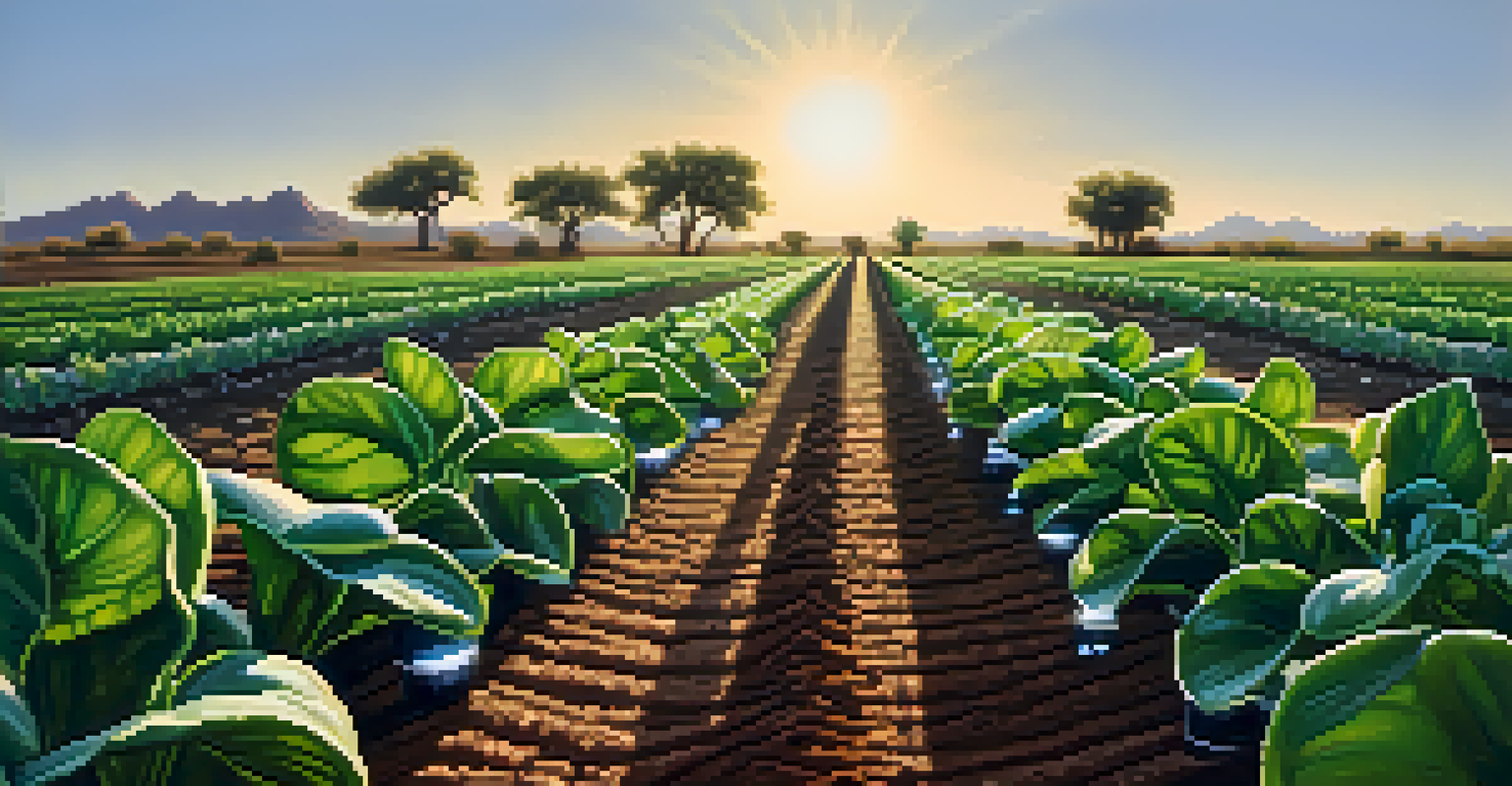Drought-Resilient Strategies for Arizona's Water Management

Understanding Arizona's Water Challenges and Drought Risk
Arizona faces unique water challenges due to its arid climate and growing population. With limited rainfall and increasing temperatures, the risk of drought is ever-present. Understanding these challenges is crucial for developing effective water management strategies.
Water is the most precious resource we have, and it is our responsibility to conserve it for future generations.
The state relies heavily on sources like the Colorado River, which has seen declining water levels. This dependence makes Arizona vulnerable to prolonged droughts, impacting agriculture, drinking water, and ecosystems. Recognizing the importance of sustainable practices is essential for the future.
Drought impacts everyone, from farmers to city dwellers, highlighting the need for collective action. By understanding the state's water challenges, stakeholders can work together to create resilient strategies that benefit all.
Implementing Water Conservation Practices in Daily Life
One of the simplest ways to combat drought is through water conservation in everyday activities. Simple changes, like fixing leaks or using water-efficient appliances, can significantly reduce water waste. These small steps, when adopted widely, can lead to substantial savings.

Residents can also embrace xeriscaping, a landscaping approach that uses drought-resistant plants. This not only conserves water but also creates beautiful outdoor spaces that require less maintenance. It’s a win-win for both the environment and homeowners.
Water Conservation in Daily Life
Simple changes like fixing leaks and using drought-resistant landscapes can significantly reduce water waste.
Educating communities about the importance of water conservation fosters a culture of responsibility. When individuals take initiative, it creates a ripple effect, encouraging others to join in the effort to preserve precious water resources.
Innovative Agricultural Techniques for Drought Resilience
Agriculture is a significant water consumer in Arizona, making it crucial to adopt drought-resilient practices. Techniques like drip irrigation allow farmers to deliver water directly to the roots of plants, minimizing waste. This method not only conserves water but also promotes healthier crop growth.
The greatest threat to our planet is the belief that someone else will save it.
Crop selection is another key strategy; farmers can choose drought-resistant varieties that require less water to thrive. This not only supports food production but also reduces the overall water footprint of agriculture. It’s about working smarter, not harder.
Moreover, employing cover crops can improve soil health and moisture retention. These practices not only combat drought but also contribute to sustainable farming, ensuring that agriculture remains viable in Arizona’s challenging climate.
Utilizing Technology for Efficient Water Management
Technology plays an essential role in modern water management strategies. Smart irrigation systems, for instance, use sensors and weather data to optimize water use for crops. By applying water only when necessary, farmers can significantly reduce waste.
Additionally, mobile applications offer users real-time data on water usage and conservation tips. These tools empower individuals and businesses to track their water consumption and make informed decisions about conservation efforts.
Innovative Farming Techniques
Drip irrigation and drought-resistant crops help conserve water while promoting sustainable agriculture.
Embracing technological advancements not only enhances efficiency but also fosters a culture of innovation in water management. It's about leveraging the tools at our disposal to ensure a sustainable future for Arizona.
The Role of Rainwater Harvesting in Drought Mitigation
Rainwater harvesting is an effective strategy for enhancing water supply during dry spells. By collecting and storing rainwater from rooftops, residents can reduce their reliance on traditional water sources. This practice not only conserves water but also promotes self-sufficiency.
Implementing rain gardens and cisterns can help manage stormwater runoff while providing a supplemental water source. These systems can be integrated into residential and commercial properties, making them accessible to a wide range of users. It’s a practical solution that combines sustainability with aesthetics.
As communities embrace rainwater harvesting, they build resilience against drought. This approach not only contributes to water conservation but also encourages a shift in mindset about water usage in Arizona.
Collaborating on Regional Water Management Policies
Effective water management requires collaboration among various stakeholders. Local governments, water agencies, and community organizations must work together to create policies that address drought challenges. This collaborative approach ensures that diverse perspectives are considered in decision-making.
Public engagement is essential; involving the community in discussions about water management fosters ownership and accountability. When residents understand the challenges and their role in solutions, they are more likely to participate in conservation efforts.
Community Collaboration is Key
Engaging local governments and residents in water management policies fosters accountability and effective solutions.
By creating a unified front, Arizona can develop comprehensive policies that prioritize sustainable water use. Collaboration not only enhances resource management but also strengthens community bonds in the face of adversity.
Educating Future Generations About Water Conservation
Education is a powerful tool in fostering a culture of water conservation. Schools can integrate lessons about the importance of water sustainability into their curricula, teaching students about local water sources and the impacts of drought. This knowledge empowers the next generation to value and protect their water resources.
Field trips to local water treatment facilities or conservation projects can provide hands-on learning experiences. Such activities not only make learning fun but also instill a sense of responsibility towards water management.

By prioritizing water education, we equip future leaders with the knowledge and skills needed to tackle water challenges. This long-term investment in education will pay dividends for Arizona’s water future.